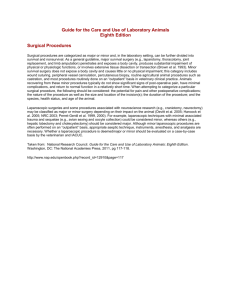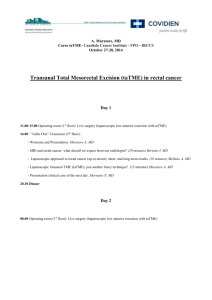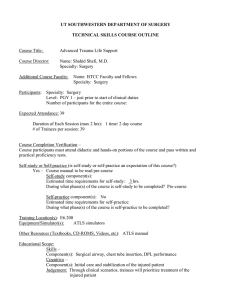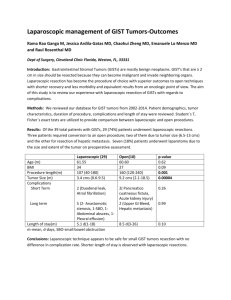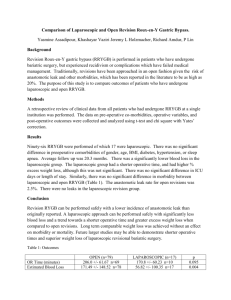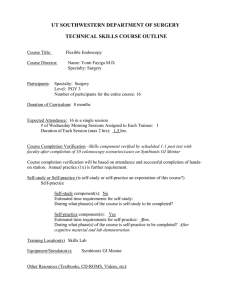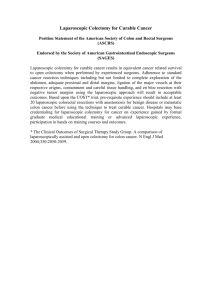UT SOUTHWESTERN DEPARTMENT OF SURGERY TECHNICAL SKILLS COURSE OUTLINE
advertisement
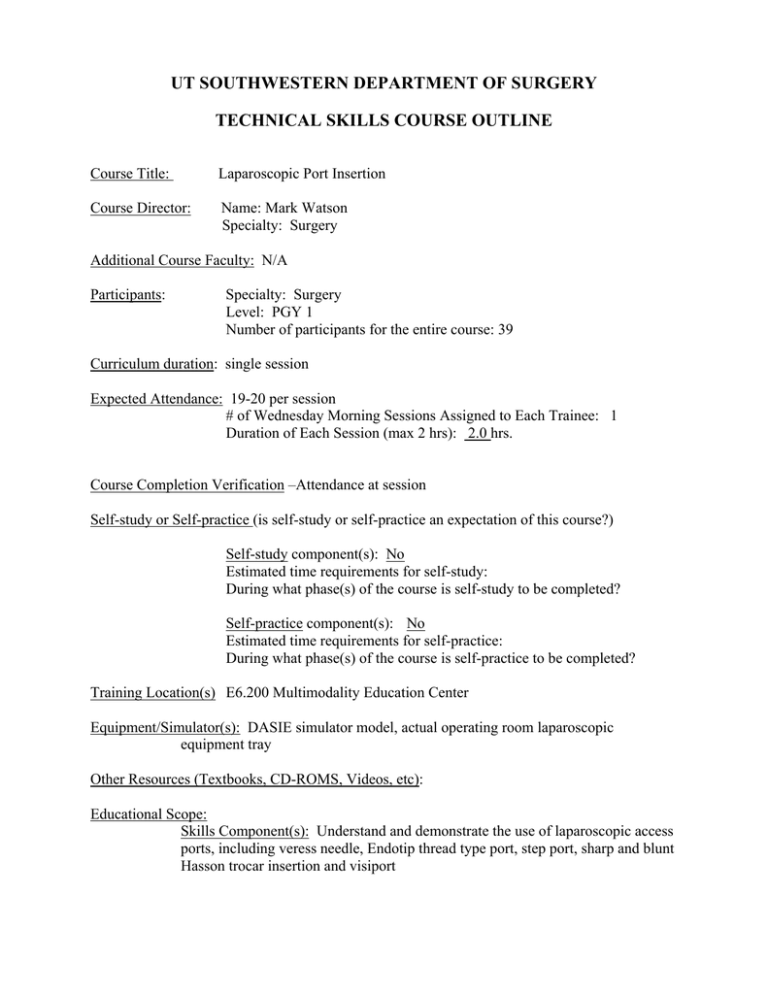
UT SOUTHWESTERN DEPARTMENT OF SURGERY TECHNICAL SKILLS COURSE OUTLINE Course Title: Laparoscopic Port Insertion Course Director: Name: Mark Watson Specialty: Surgery Additional Course Faculty: N/A Participants: Specialty: Surgery Level: PGY 1 Number of participants for the entire course: 39 Curriculum duration: single session Expected Attendance: 19-20 per session # of Wednesday Morning Sessions Assigned to Each Trainee: 1 Duration of Each Session (max 2 hrs): 2.0 hrs. Course Completion Verification –Attendance at session Self-study or Self-practice (is self-study or self-practice an expectation of this course?) Self-study component(s): No Estimated time requirements for self-study: During what phase(s) of the course is self-study to be completed? Self-practice component(s): No Estimated time requirements for self-practice: During what phase(s) of the course is self-practice to be completed? Training Location(s) E6.200 Multimodality Education Center Equipment/Simulator(s): DASIE simulator model, actual operating room laparoscopic equipment tray Other Resources (Textbooks, CD-ROMS, Videos, etc): Educational Scope: Skills Component(s): Understand and demonstrate the use of laparoscopic access ports, including veress needle, Endotip thread type port, step port, sharp and blunt Hasson trocar insertion and visiport Cognitive Component(s): Preoperative planning for selection of appropriate laparoscopic access Judgement: Understand appropriate patient selection for closed vs. open laparoscopic port insertion Learning Objectives: 1) Understanding closed vs. open laparoscopic port insertion. 2) Ability to demonstrate appropriate use of closed access laparoscopic port insertion. 3) Demonstrate the use of different laparoscopic port access on DASIE model. Summary of Curriculum, Teaching Methods, and Resource Utilization: 1) Open insertion a. Direct visualization (Hasson trocar) b. Semi-closed (Umbilical or other site) i. Digital palpation 2) Closed insertion a. Pre-insufflation (Veress needle) i. Unguarded (reusable) 1. Sharp 2. Blunt/bladeless plastic (XCel/Ethicon) ii. Guarded (disposables or semi-reusable) iii. Radially Expanding Trocars (Covidien Step) iv. Spiral rotation, EndoTip (Storz) b. Non-insufflated i. Visual entry trocars 1. Spiral rotational, EndTip (Storz) 2. Optiview (Ethicon) 3. VisiPort (Covidien) 3) Hands on practice utilizing DASIE model by participants Methods for giving feedback to learners (Formative and Summative): Direct interaction and feedback with instructor during session. Methods for Assessment of Learners: Demonstration to faculty of safe laparoscopic port insertion Methods for Remediation: (How are individuals who need remediation identified and how is remediation facilitated?) Continued practice in 1:1 session with faculty. Methods of Course Evaluation: By Learners: E-Value online system By Faculty: E-Value online system

